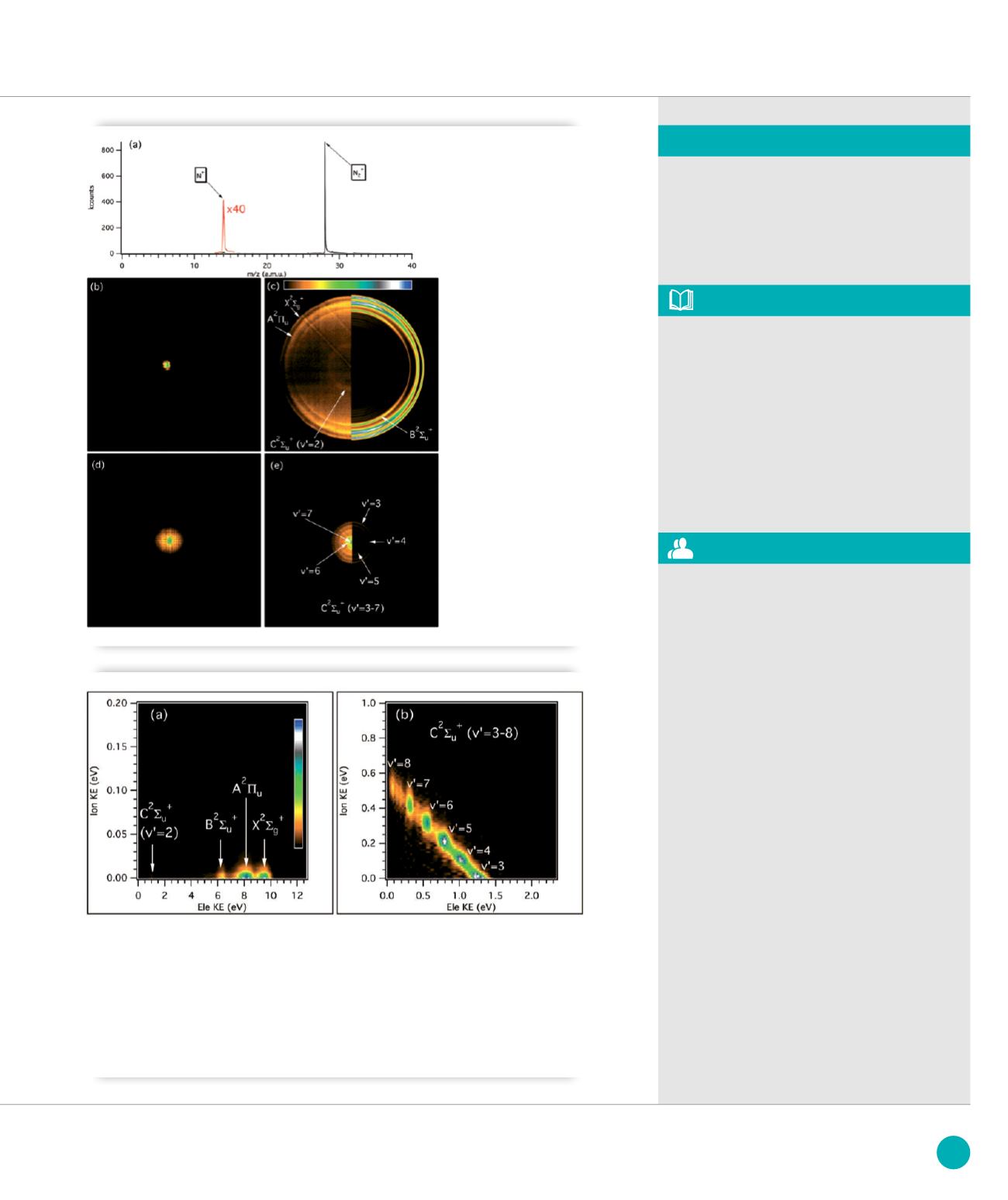
DESIRS beamline
ASSOCIATED PUBLICATION
DELICIOUS III: A multipurpose double
imaging particle coincidence spectrometer
for gas phase vacuum ultraviolet
photodynamics studies
G. A. Garcia*, B. K. C. De Miranda, M. Tia,
S. Daly, and L. Nahon
Review of Scientific Instruments 84(5) (2013) art.
n°053112
* Synchrotron SOLEIL, l’Orme des Merisiers,
St Aubin BP48, 91192 Gif sur Yvette Cedex,
France
CORRESPONDING AUTHOR
➌
Electron/ion kinetic energy correlation diagrams for the photoionization of molecular nitrogen above
the dissociative ionization threshold for the N
2
+
and N
+
masses. The internal energy of the N
2
+
ion is given
by energy conservation as: hv=E
int
+ KE
ele
, so that very fast electrons are correlated to ions with small internal
energy. Conversely, for slow photoelectrons, the parent ion will have an important energy reservoir that will
be dissipated via dissociation to N
2
+
-> N
+
+ N. Therefore, panel (a) shows that the N
2
+
ion has no translational
energy (does not come from a fragmentation event), and can exist only for fast photoelectrons. Panel (b) shows
that the N
+
fragment only appears for slow photoelectrons (KE
ele
<1.25 eV, correlated to the C electronic state of
the N
2
+
cation), and the fact that intensity appears along a diagonal line means that only one dissociation channel
is open. The figure provides a very clear picture of the spectroscopy of the parent ion, as well as its fragmentation
pathways—appearance energies and barrier heights.
➋
(
a
) Mass spectrum
showing the N
2
+
and N
+
ions.
The left figures, (
b
) and (
d
)
present the photoion images
for the N
2
+
and N
+
masses
respectively. The right figures
(
c
) and (
e
), correspond to the
photoelectrons correlated to the
production of N
2
+
and N
+
, resp.
In all the 2D images, the radius
is proportional to the particles’
kinetic energy.
(
a
)
119
SOLEIL
HIGHLIGHTS
2013


